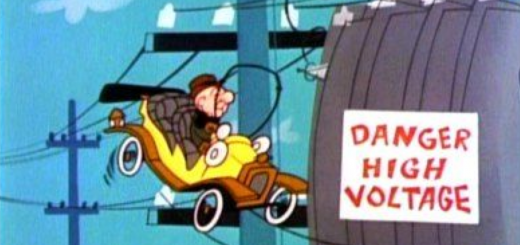Saved from the fires of Ruzhan

And so there we sat, all through the Sabbath, watching as the synagogue in which we had been imprisoned mere hours earlier was claimed by the flames and, along with all the Torah-scrolls and holy books of both Ruzhan and Govrov, burned to the ground…
Rabbi Shafran’s poignant memories of the lost shul in Ruzhan prompted my brother, Rabbi Shabsai Bulman of Jerusalem, to write:
As a young man, my father, Rav Nachman Bulman ZTL, served as the rabbi of the shul in Danville, VA. Around 1952, a business establishment in Danville, VA, had to clear its basement of the library left behind by a former rabbi. My father was asked to see if he might have use for any of the seforim.
To his surprise, he found a copy of the Alshich HaKadosh that bore the stamp of the Rav R.Weiss of Ruzhan. His mother, my grandmother—Mrs. Ettel Zabeldovich Bulman—was a native of Ruzhan.
Excitedly, my father called his father to ask if he knew that Rav. My grandfather replied, “Of course! He was Mesader Kiddushin at our wedding!”
How did a sefer that once belonged to the Rav of Ruzhan end up in a basement in Danville, VA so as to come into my father’s hands? A mystery.
That sefer is still in our family’s possession. So a few of the holy books of Ruzhan survived. And a few of its living Sifrei Torah survived.
And if their children and children’s children still serve the Ribbono Shel Olam and study His Torah, we can repeat the words of the prayer, “All this has come upon us, yet we have not forgotten You nor falsified Your Holy Covenant.”



Many years ago, like maybe 20 or more, I used to walk to my shul in Druid Hill Park through a neighborhood called Lower Park Heights. One Shabbos, I noticed pages of siddurim or other holy writings on the sidewalk. They were most probably in a basement and the present tenants, African Americans, were throwing them away as having no value.
There was nothing I could do as it was shabbos and outside the eruv.
Here is the question. Is there a difference between neighborhoods that are empty of Jews in the USA and towns in Europe that once had a Jewish population? Another way of asking it, why do we visit Eastern Europe and spend money helping the Poles and the Ukrainians by viewing the places where they killed us? Rabbi Berel Wein has expressed this as the reason he does not personally lead tours to those countries. Should I go back to Tiktin where my father was born or Polnoa where my mother was born. Both were once vibrant centers of Jewish life, one Litvish, one chassidish. Today they are Judenrein.
If I remember correctly, my father, who was from Ruzhan, Poland, was first cousins with Rabbi Nachman Bulman’s mother. That makes me directly related to Toby Katz. And, according to a family tradition on my mother’s side, I am also a direct descendant of the Holy Ba’al Shem Tov.
Okay, maybe I am showing off a bit here, but that is only because I will probably never gain such notoriety based on my own merits.
L. Oberstein makes a great point. There were more Jews in the Bronx in the 1940s than there ever were in any European city. That community is now almost completely gone, with something like three hundred synagogues now destroyed or put to other uses. For example, the Bronx Museum of the Arts started out as a Young Israel synagogue; I know people who were members there. Even more former synagogues are now churches. I pass these buildings on a regular basis. The only strong Jewish area left in the Bronx is my neighborhood of Riverdale which was didn’t get an Orthodox synagogue until the 1950s.